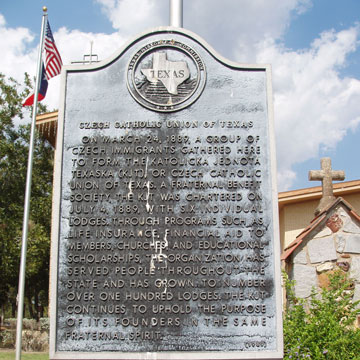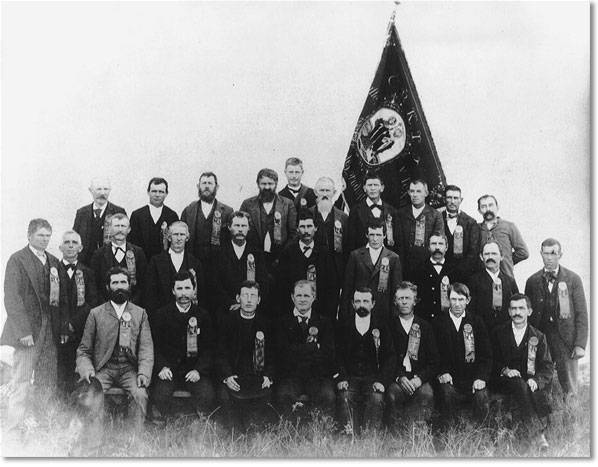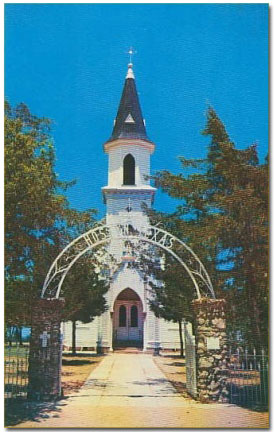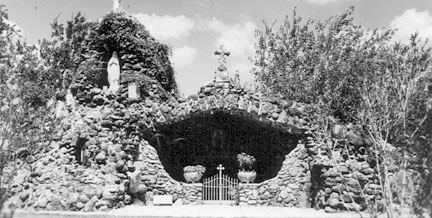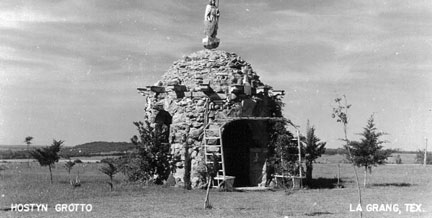From La Grange, take Highway 77 south about 5 miles then go northwest on FM 2436 about one mile to Queen of the Holy Rosary Catholic Church
Texas Grotto Reproduces French Shrine of Miracles
Dallas Morning News—March 24, 1929. Built from part of an old church wall and stones gathered from the banks of the Colorado, the Hostyn chapel to our Lady of Lourdes is often the scene of weddings and provides a haven of rest to passers-by.
Desiring to create something beautiful out of the unattractive old rock wall which surrounding the Holy Rosary Church, the Rev. Paul D. [Kasper] of Plum had the wall torn down and with it laid the foundation of the now famous Grotto located at Hostyn, Texas five miles south of La Grange.
Standing high on Hostyn hill where it can easily be seen for miles, the Grotto is an exact reproduction of the world-renowned shrine of miracles in Lourdes, France. Around this beautiful grotto in Lourdes centers the story of the shepherdess girl, the latest canonized virgin of the Roman Catholic Church. It is said that the Virgin Mary appeared to the little shepherdess in 1858 and told her to erect a shrine. On the spot where she stood was found a spring of water and there the Grotto of Our Lady of Lourdes was erected. Today it is a place of pilgrimages and remarkable cures are performed through its waters. Stacks of crutches remain beside the shrine, left by those who came as cripples and went away healed.
Having drawn up his own plans [Rev. Kasper], with the aid of Mexican masons from San Antonio, built this Grotto from the old rock wall and from pieces of petrified wood and rocks secured from the banks of the Colorado River near by. The various and peculiar shapes and sizes of the stone add to its architectural design.
In keeping with the Lourdes custom, pilgrimages are made to this county by people from the surrounding country and there prayers are offered up for the less fortunate ones. Occasionally a wedding is performed at the Grotto but only once a year do they say mass in the chapel and that is on the feast of the Holy Rosary, the first Sunday in the month of October.
Thousands of people from all over Texas and from other states also, have viewed the shrine and it has aroused the admiration of all who see it. Over 400 loads of stone, seventy-nine loads of sand and 258 sacks of cement were used in its construction. The cost of building and equipment was $4000.00. It measures forty-three feet in length, twenty feet high and twenty-six feet wide.
Seventeen Priests and 7,000 people were present at the dedication services, held in the fall of 1925. The Most Rev. Arthur J. Drossaerts, D.D., Archbishop of San Antonio, was in charge of the ceremonies.
